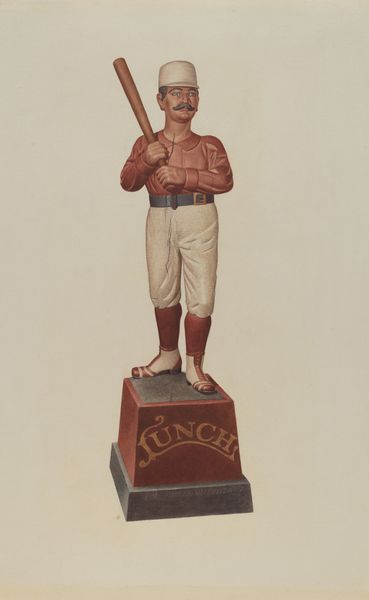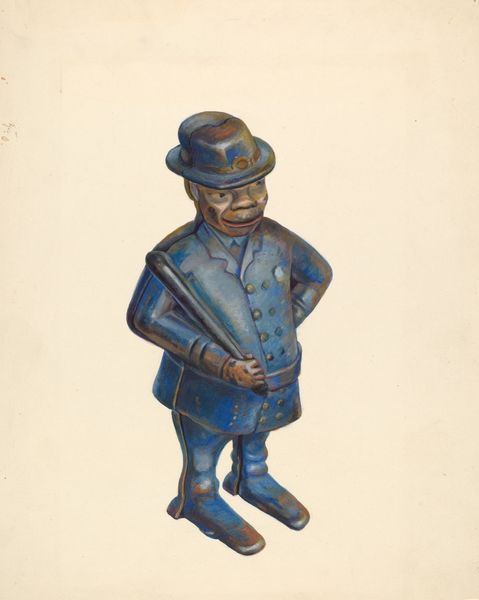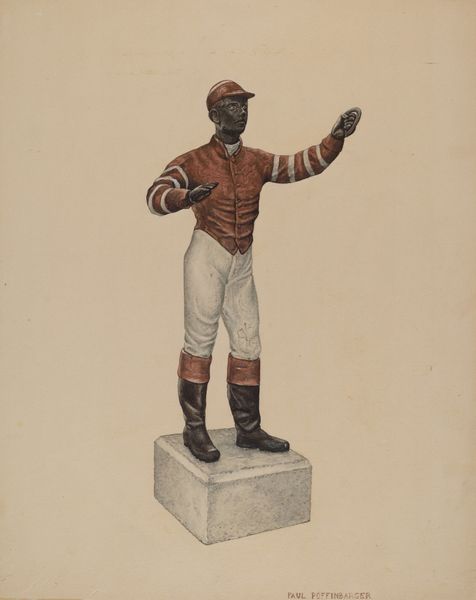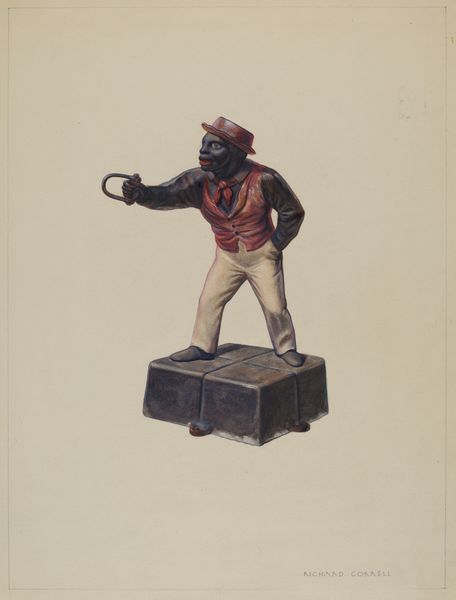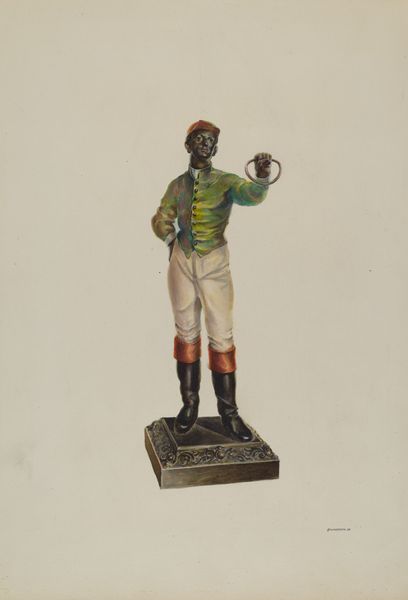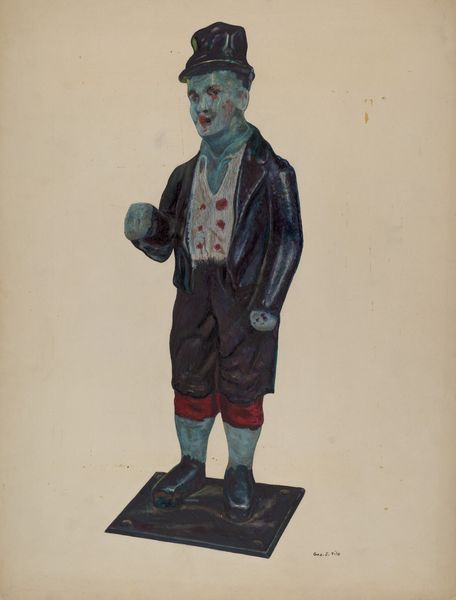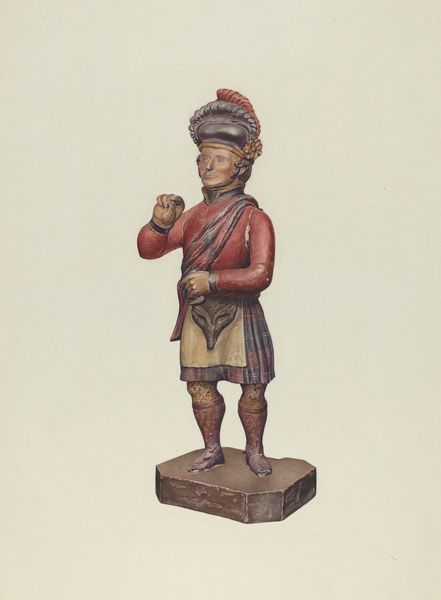
drawing, watercolor
#
portrait
#
drawing
#
caricature
#
caricature
#
figuration
#
watercolor
#
folk-art
#
orientalism
#
portrait drawing
#
watercolour illustration
#
decorative-art
#
portrait art
Dimensions: overall: 38.9 x 31.9 cm (15 5/16 x 12 9/16 in.)
Copyright: National Gallery of Art: CC0 1.0
Curator: What a striking, albeit unsettling, image. "Hitching Post," a watercolor drawing believed to be created around 1939 by Frank Eiseman. The style appears to me as if from a work of decorative art, an illustration. Editor: Yes, immediately, the caricature confronts you. It's garish, almost aggressively so, in its depiction. The colors are vivid, yet something feels deeply wrong about how the figure is presented. Curator: The work references, almost certainly, the visual language of minstrelsy and Jim Crow era imagery. Note the exaggerated features and the bright red jacket. The image also hints to themes like orientalism and folk art. Editor: And that is exactly what makes this so disturbing. While Eiseman’s intent remains unclear, it’s impossible to ignore the historical context in which such imagery flourished. The "Hitching Post," by mimicking the design of lawn jockeys or other decorative statues, perpetuates stereotypes of black people that reinforced racist power structures. Curator: There's a tension here between the aesthetics of caricature, which have a long, complex history, and the specific deployment of those aesthetics in service of racial caricature. I suspect Eiseman was playing with established visual tropes. Editor: Intention or not, it becomes complicit in the broader history of representing Blackness through dehumanizing caricature. Consider the legacy of these images – they served to normalize discrimination and violence. Even rendered in what might be seen as a playful or naive style, the drawing still reproduces damaging ideas. Curator: The positioning, literally "at post", almost as an item to use for hitching. It does not suggest human value or status. Editor: I agree; its title, its subject matter, and date are difficult to overlook in terms of understanding America's legacy of segregation. What a difficult piece to grapple with, honestly. Curator: Indeed. An uneasy reminder of the past, and the way art can reflect, perpetuate, or even unwittingly challenge prevailing ideologies.
Comments
No comments
Be the first to comment and join the conversation on the ultimate creative platform.

